Salamandra salamandra
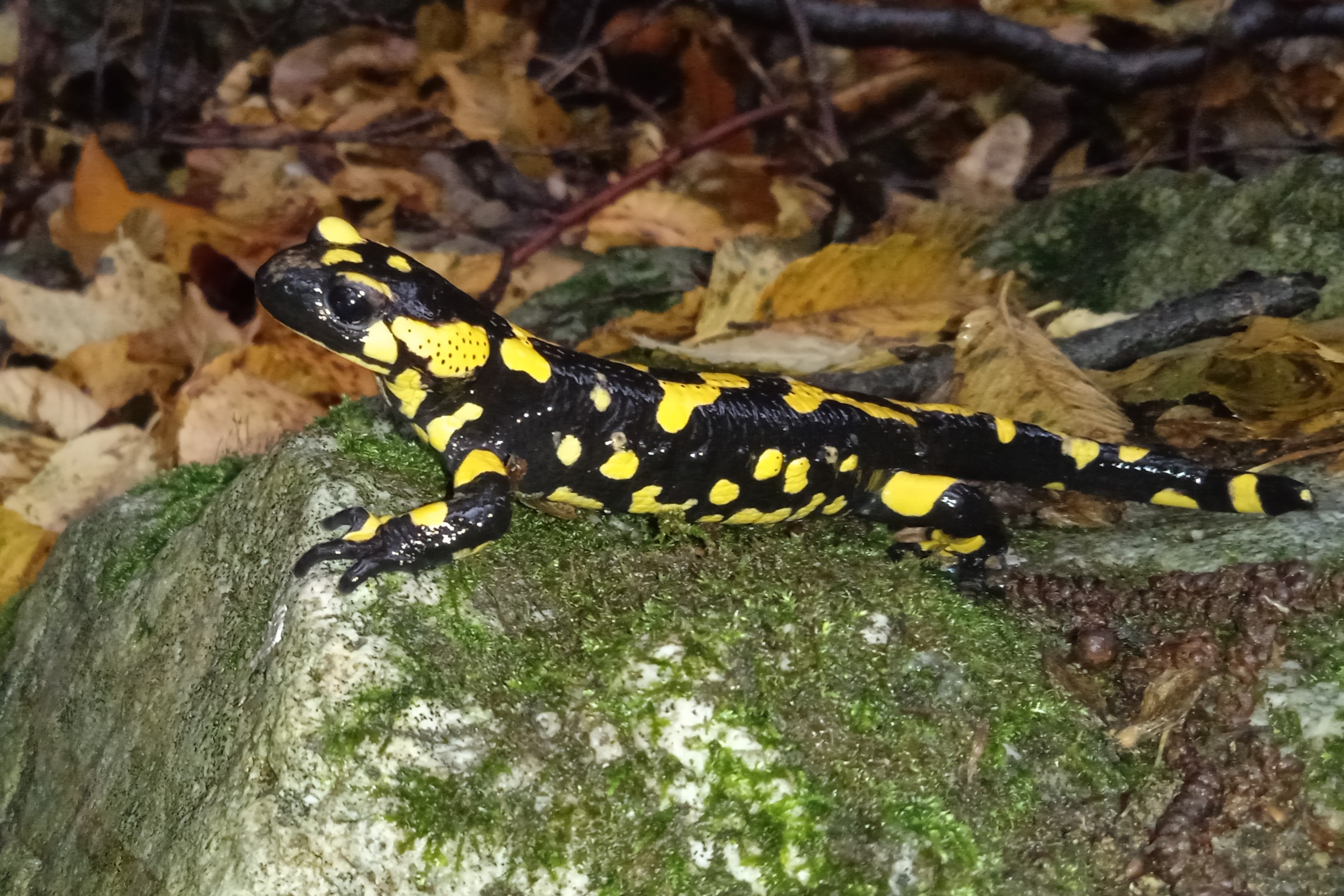

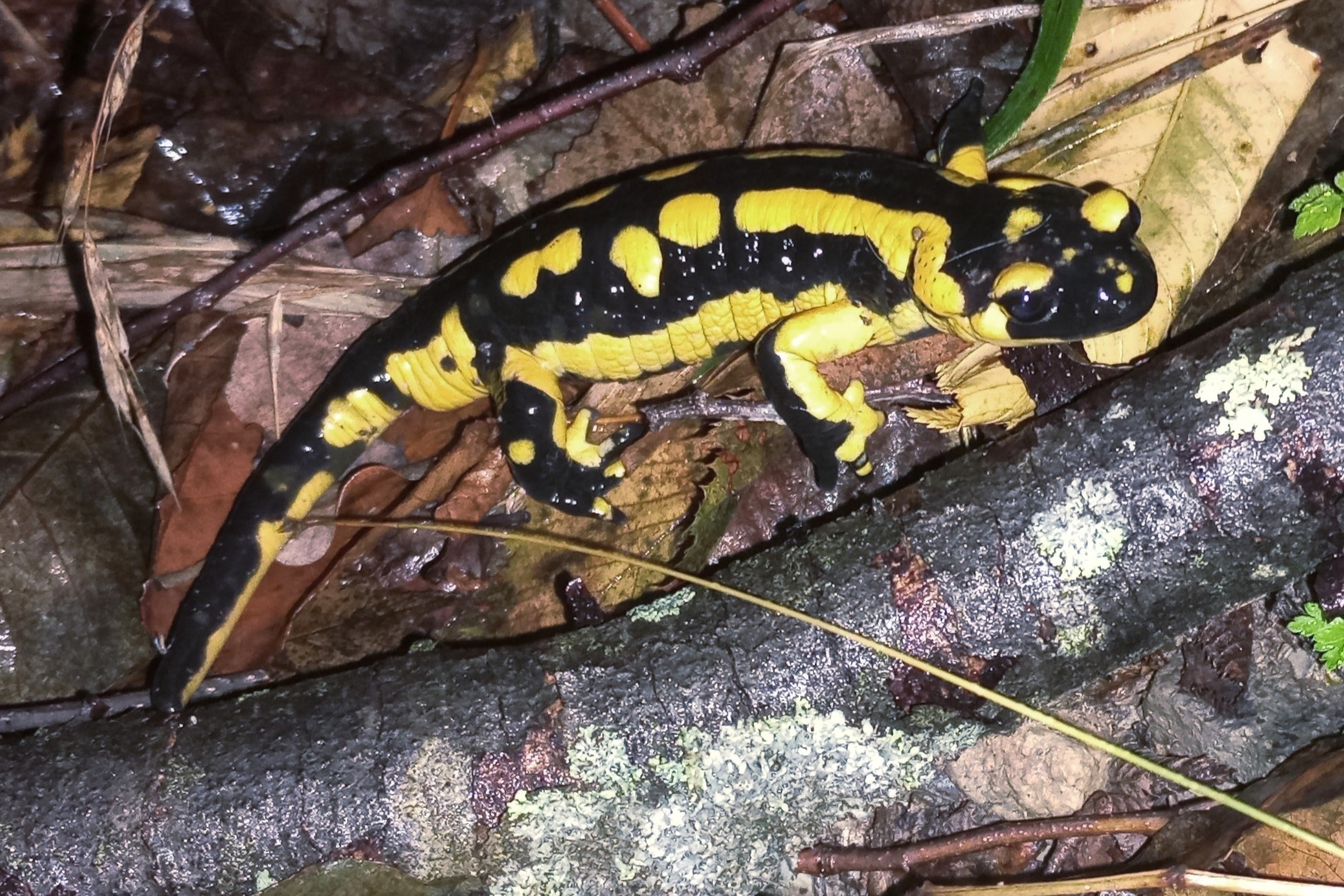
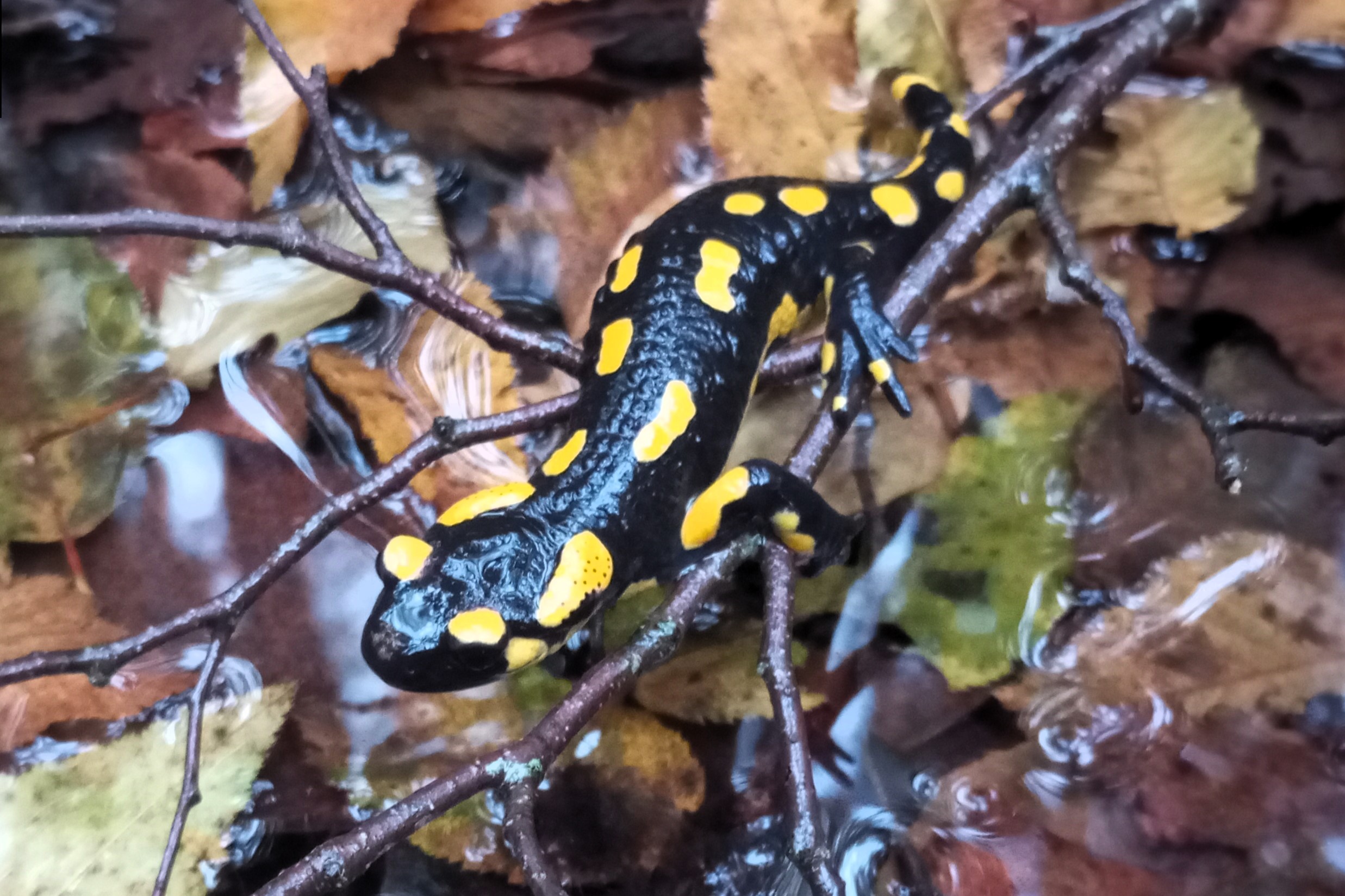
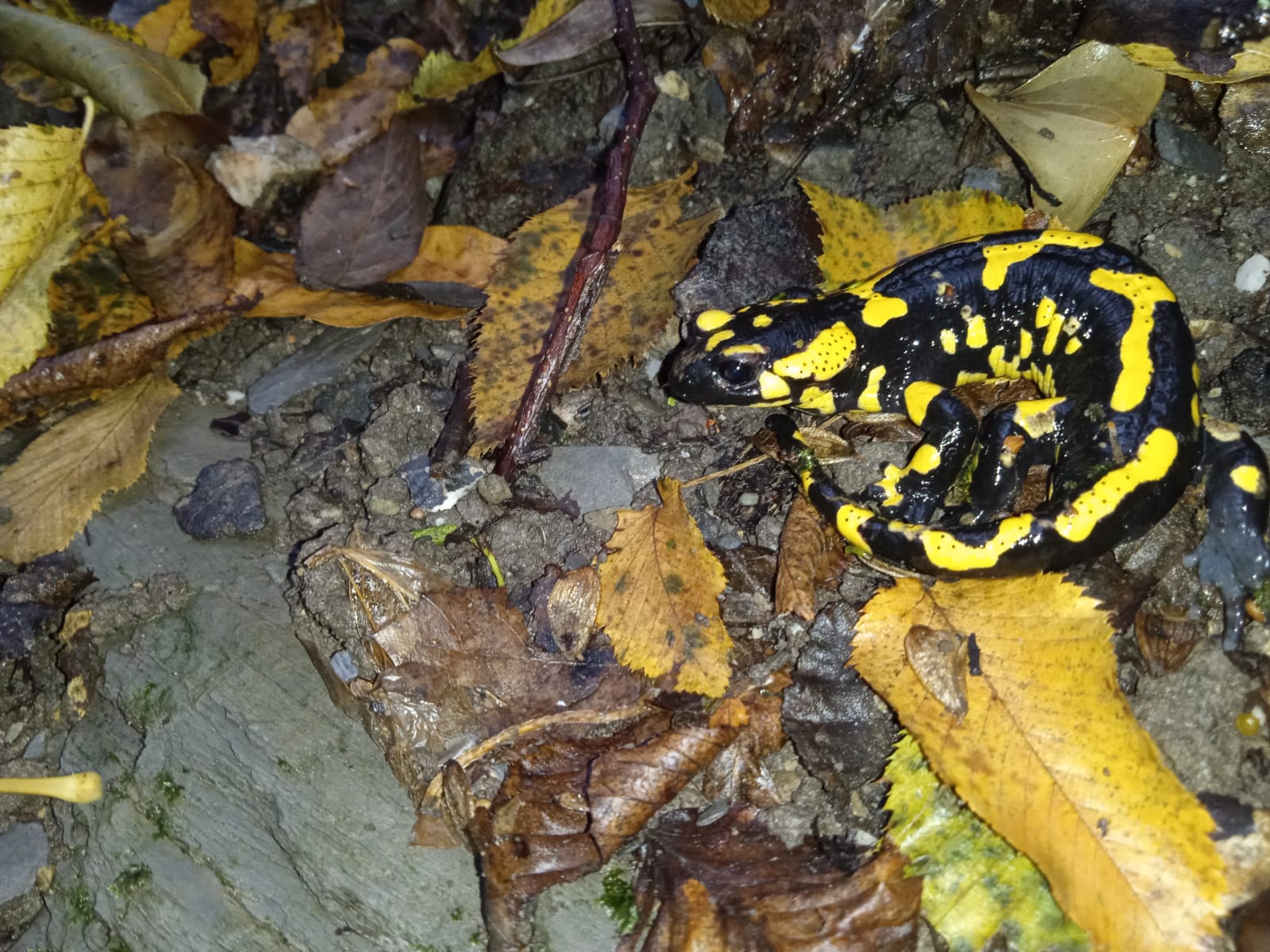
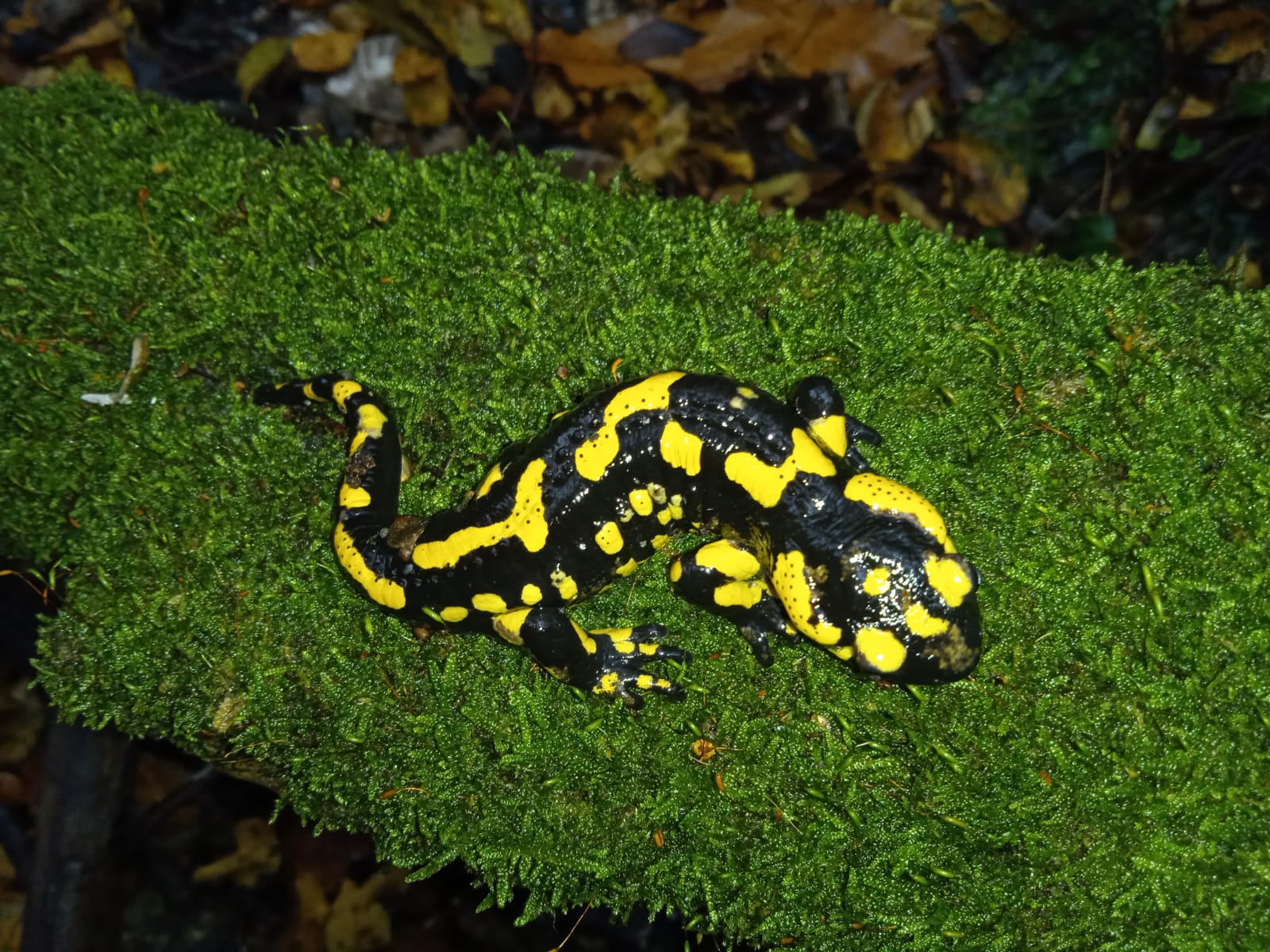
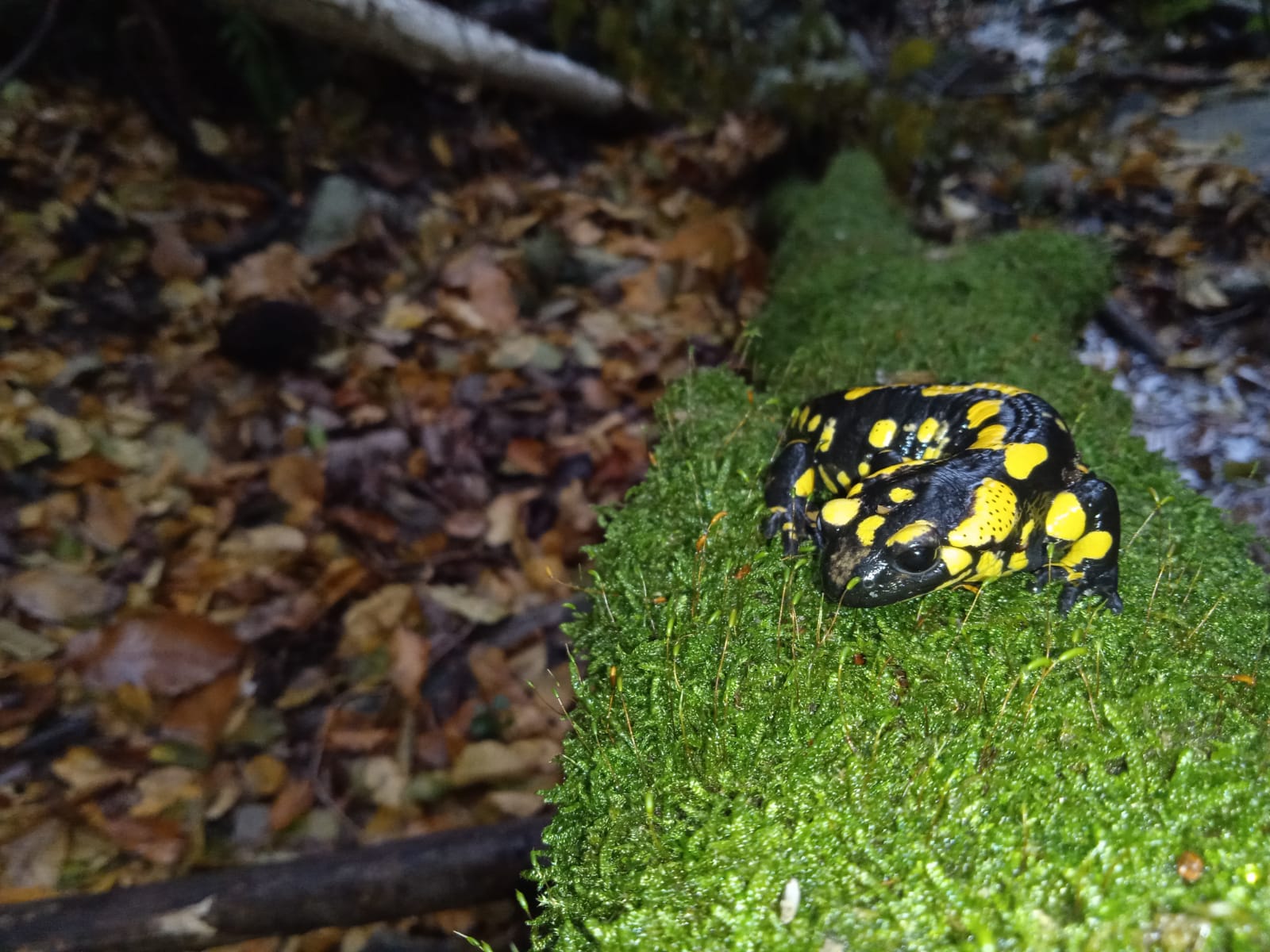
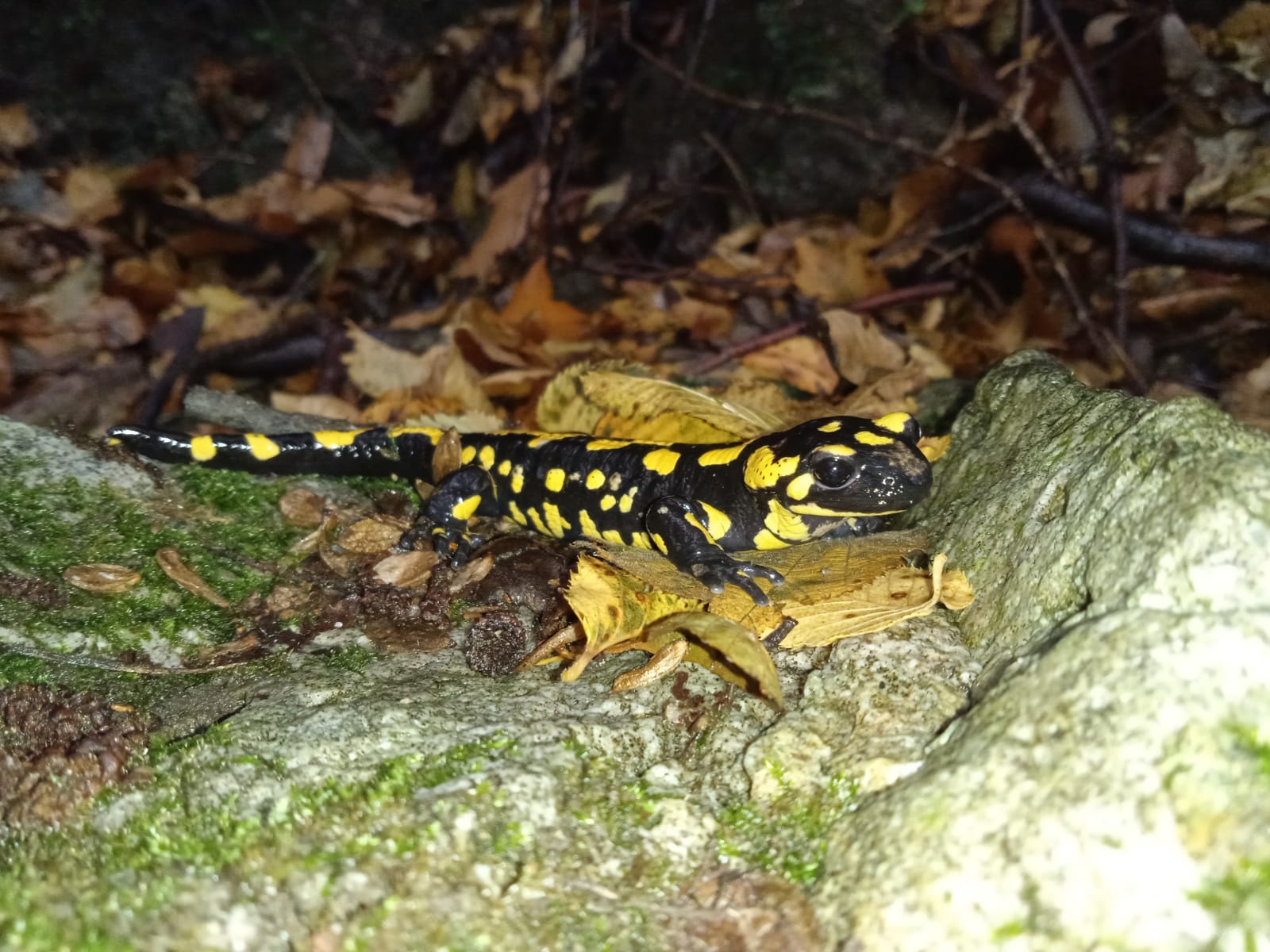
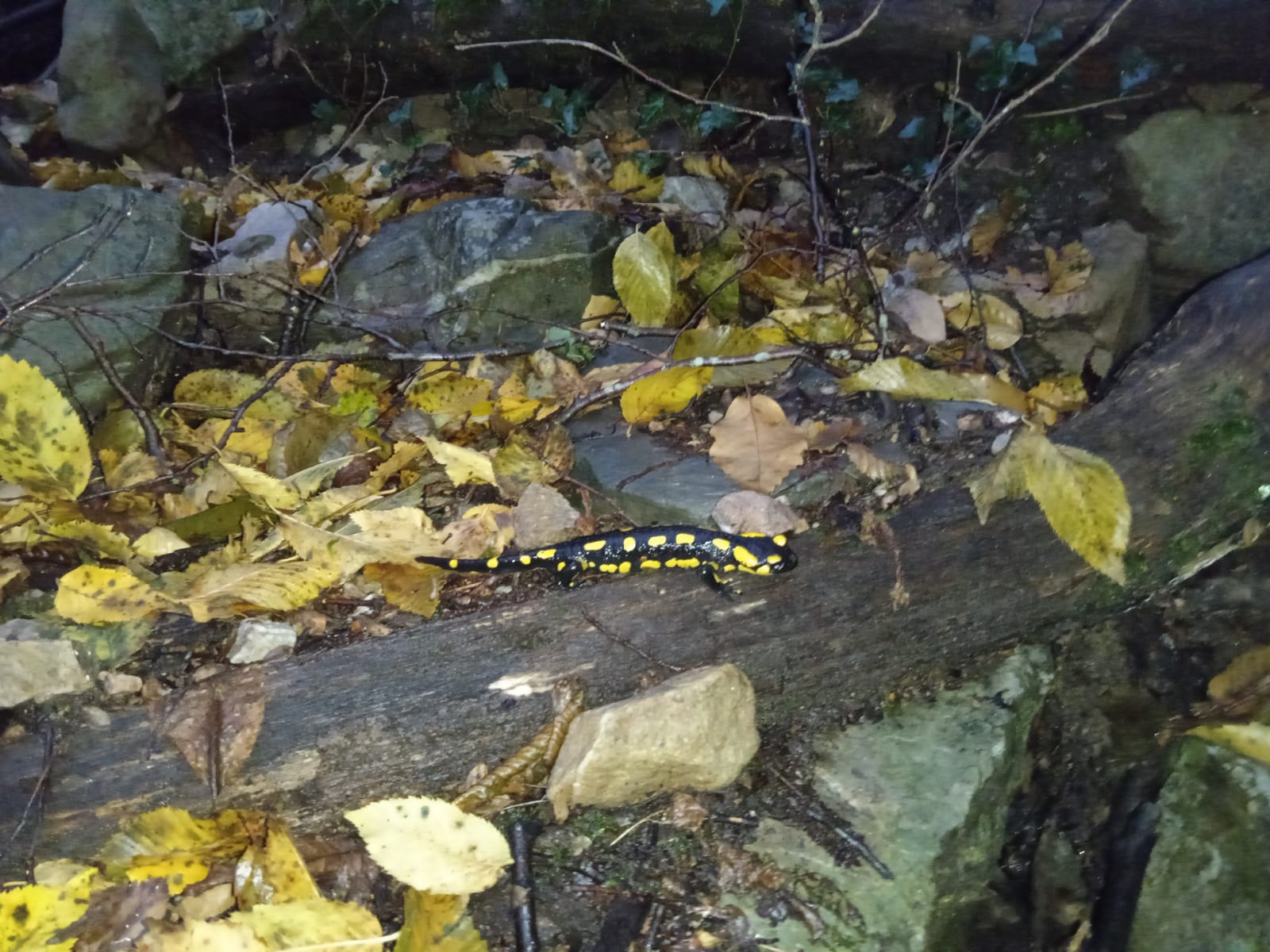
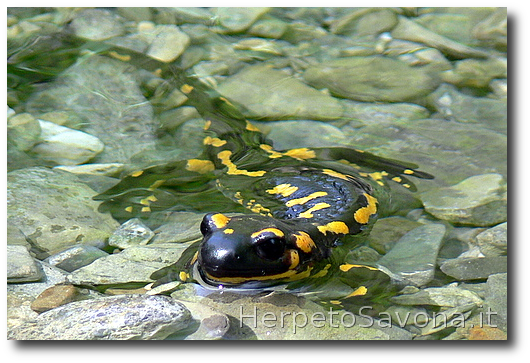
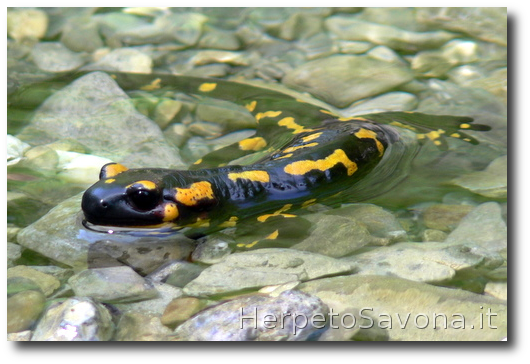
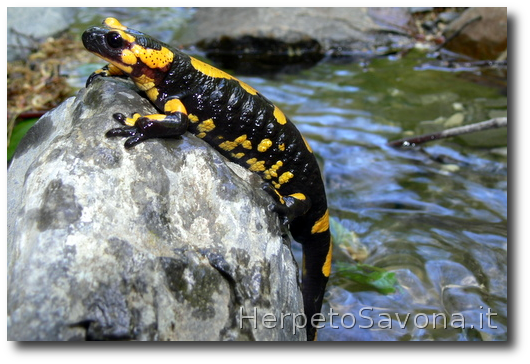
Amphibia → Urodela → Salamandridae → Salamandra → Salamandra salamandra
Bisciabàggiu, Nèspuru surdu, Lajåza, Sirvèstru, Snèsctr, Ginèstru, Nespusùrdu
The Fire Salamander is one of the most recognizable Italian amphibians, thanks to its extraordinary glossy black background coloration, vividly spotted or streaked with yellow markings, whose pattern varies greatly from individual to individual and from population to population.
Females can reach a total length of 11 in (28 cm), but normally both males and females remain around 8 in (20 cm).
The head is small and rounded, with two large parotoid glands positioned behind the prominent black eyes; these glands, along with the many others distributed on the rough skin, secrete alkaloid-type toxic substances, which protect against predators, infections, and dehydration.
The body is stocky and robust, with four short legs equipped with strong toes, and a moderately long tail with the same dorsal color.
During the larval period, the salamander has a uniform brownish coloration, well-developed external gills on the sides of the head, and a light spot at the base of the limbs: transformation into an adult occurs via metamorphosis, with progressive disappearance of the gills and acquisition of the typical pattern.
It does not produce a “song,” but when threatened can emit brief squeaks or chirps.
The Fire Salamander is widely distributed in central and southern Europe, from the Iberian Peninsula to the Carpathians and western Balkans, with marginal occurrences in North Africa and Asia Minor.
In Italy it is widely found from the Po plain to Sicily, although absent in the driest or most heavily urbanized areas.
In the province of Savona and western Liguria the species is rather common, especially between 660 and 3,300 ft (200 and 1,000 m) of altitude, but locally can also be found near sea level.
It prefers cool, humid woodland environments, such as chestnut groves, beech woods, oak woods, and mixed broadleaf forests, often near clear streams, small ponds, springs, or areas with abundant leaf litter and vegetation.
It likes to shelter under stones, fallen logs, or among roots, taking advantage of the stable humidity of forest microhabitats.
Though relatively adaptable, it avoids environments that are too open or exposed to sunlight, where the risk of dehydration is high.
A shy species with mainly crepuscular and nocturnal habits, it leaves its refuge on rainy or humid nights, moving slowly along the forest floor in search of food or a mate.
It is not inclined to travel far from its territory, generally making only short journeys of a few feet (a few meters) from its daytime shelter.
The activity period usually runs from February to November, with possible sightings even in winter months during mild and rainy weather anomalies.
Breeding begins early, often as soon as February: males engage in ritualized combat to attract females, approaching with undulating movements and physical contact.
Mating involves the deposition of a spermatophore, which the female collects internally for fertilization.
Sperm cells can be stored in the spermatheca for several months, allowing for delayed fertilization.
Females are ovoviviparous, meaning they incubate eggs internally and, after a gestation period that may last over a year, give birth to fully formed larvae in shallow, fresh, oxygenated waters; each female can release from 10 to 70 larvae (typically 20–40), which complete metamorphosis in about a month.
In mountain habitats, direct births are common: tiny, already metamorphosed juveniles are born directly onto moist ground.
The Fire Salamander is a nocturnal predator, specialized in hunting terrestrial invertebrates: adult insects and larvae (beetles, flies, moths), earthworms, spiders, and small mollusks make up the majority of its diet, occasionally supplemented with other sub-forest animals.
The striking aposematic coloration, combined with the secretion of toxic and unpalatable substances, results in the Fire Salamander having very few natural predators, limited to rare opportunists such as rats (Rattus rattus), some birds, and occasionally snakes.
Domestic predators (dogs, cats, chickens) may sometimes attack it but generally desist, discouraged by the skin's toxicity.
The main threats today derive from human activity: road mortality, habitat fragmentation and pollution, fires, and changes to microclimates are all factors contributing to local population decline.
The Fire Salamander is the subject of numerous popular legends, including the false belief that it is “immune to fire” or extremely poisonous to humans. In reality, its skin secretion contains alkaloids such as samandarin and other steroid-type toxins, capable of irritating mucous membranes and sensitive skin but not lethal to humans (the lethal dose – LD₅₀ – for small mammals ranges from 2 to 40 mg/kg, while for humans only rare cases of local allergic reactions are reported).
It is nevertheless advisable to avoid direct contact with eyes, mouth, or wounds to prevent irritation.
Longevity in the wild can exceed 20 years; in protected conditions, specimens have been documented living for over 50 years.